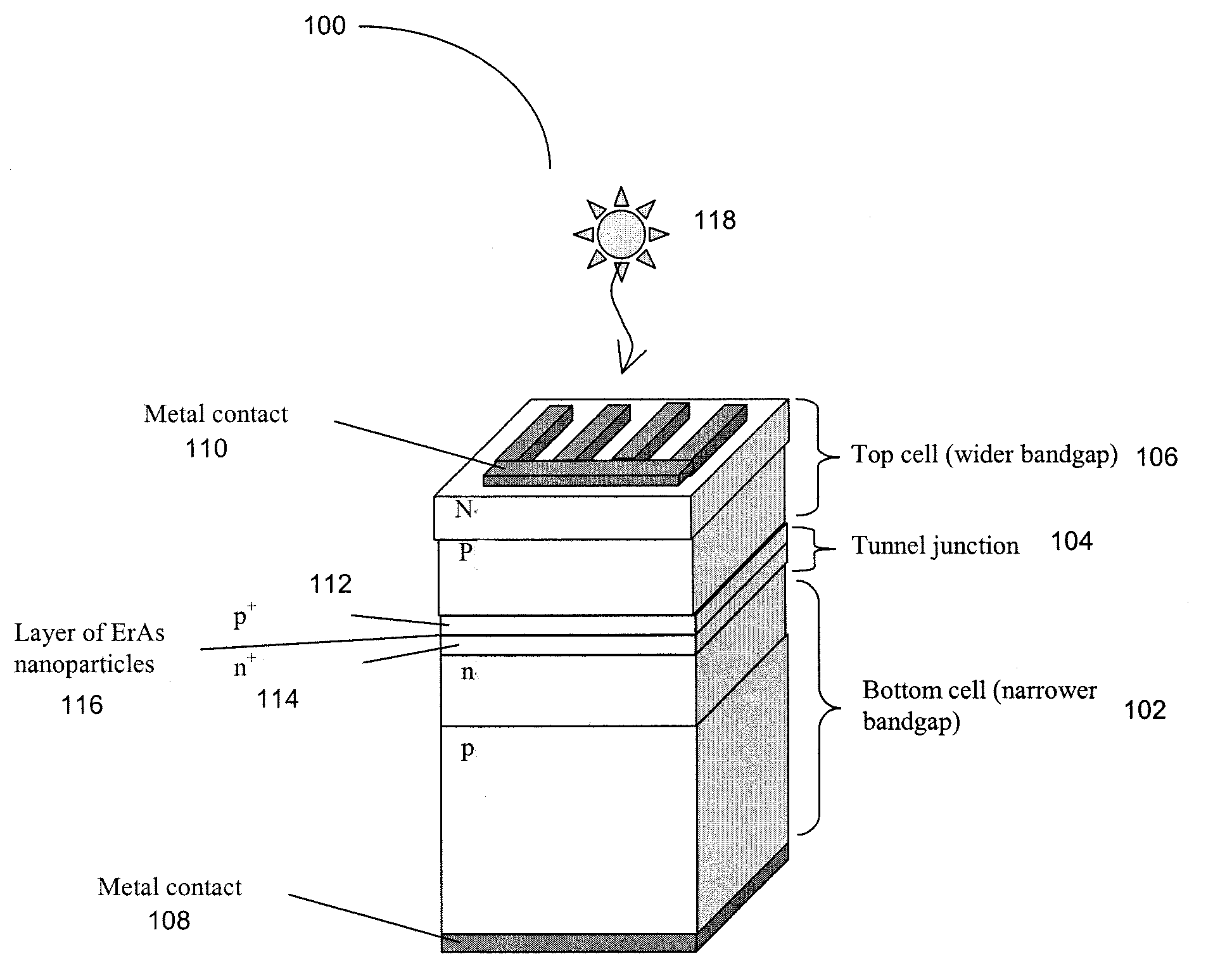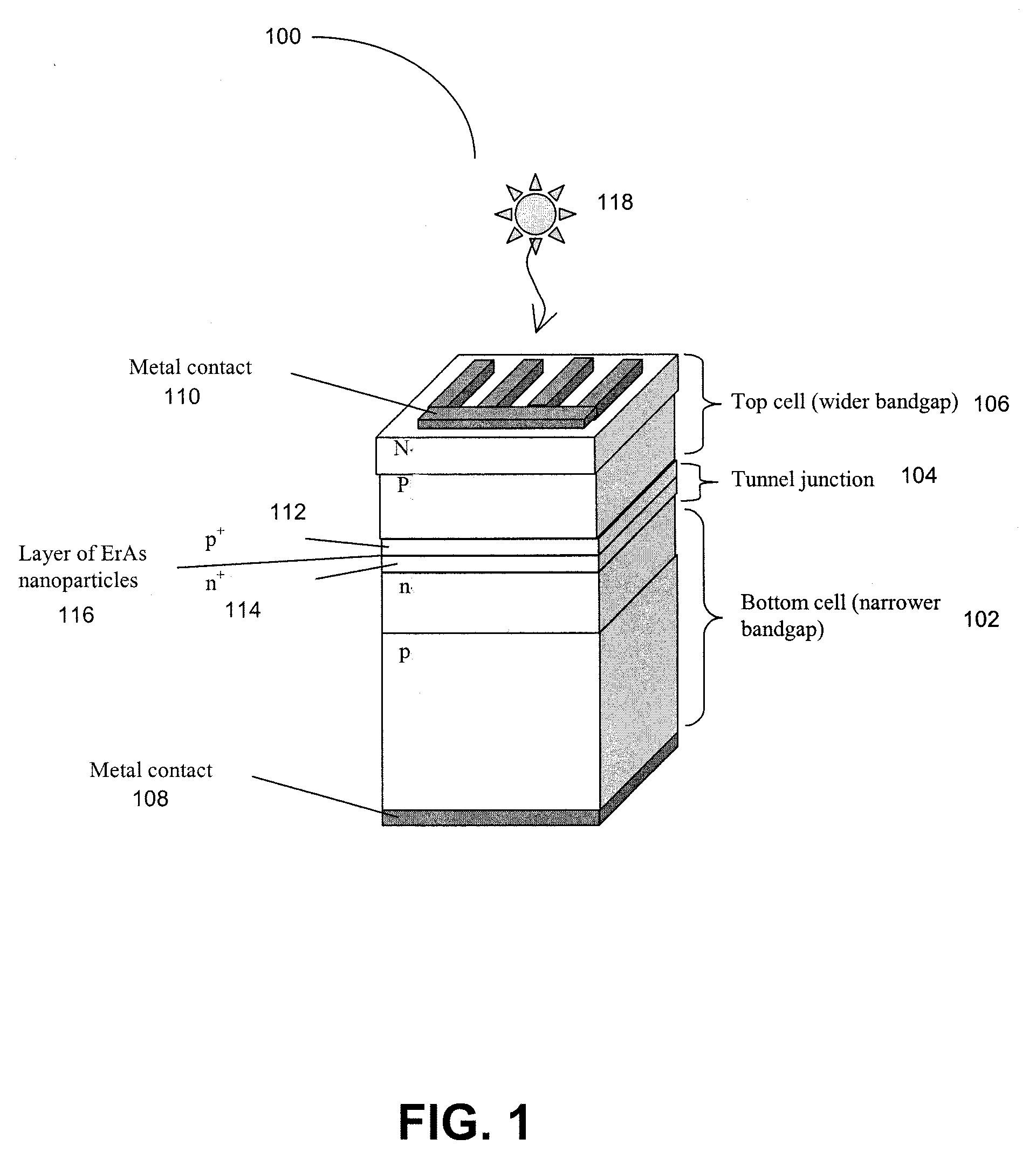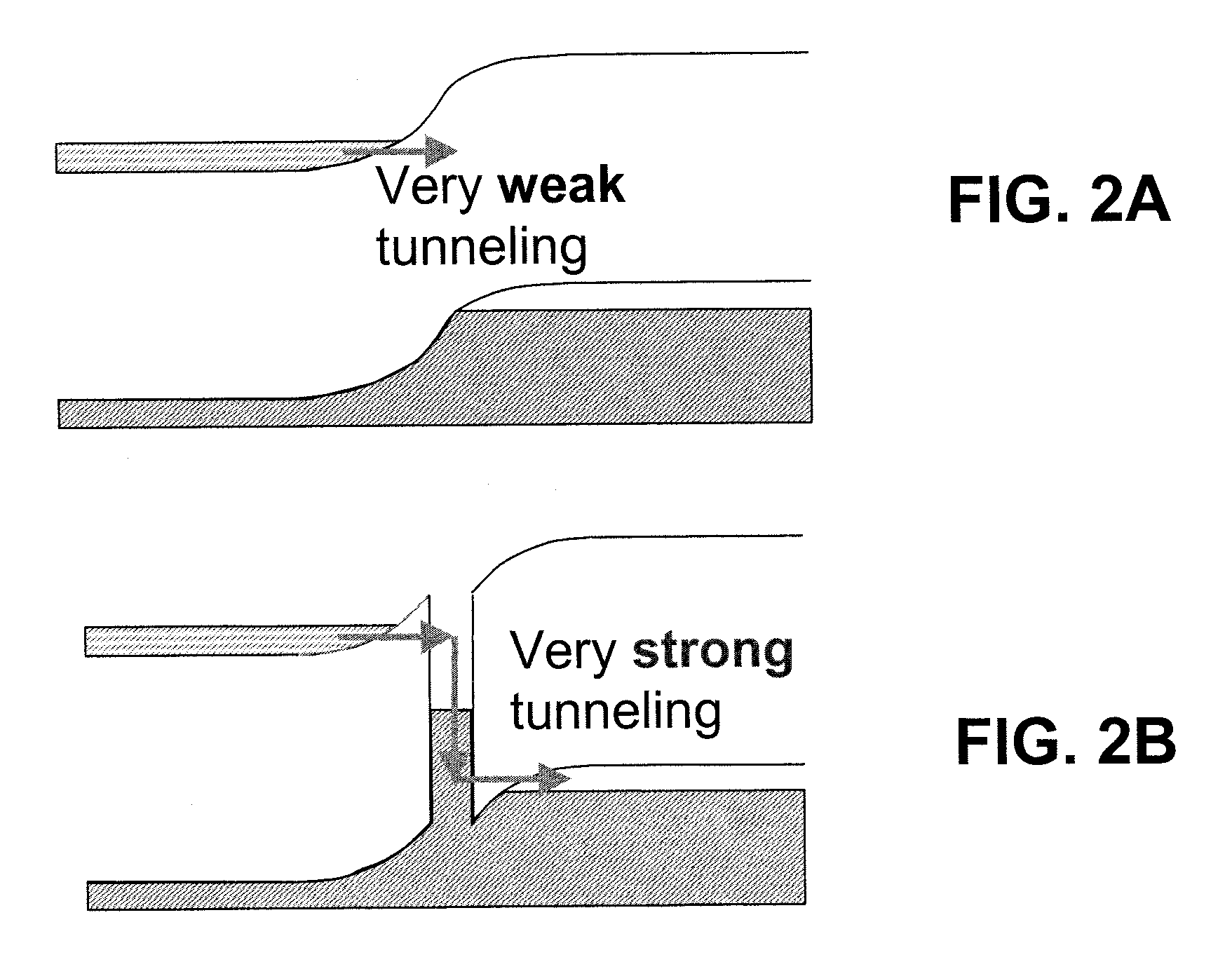Enhanced tunnel junction for improved performance in cascaded solar cells
- Summary
- Abstract
- Description
- Claims
- Application Information
AI Technical Summary
Benefits of technology
Problems solved by technology
Method used
Image
Examples
Embodiment Construction
[0023] In the following description of the preferred embodiment, reference is made to the accompanying drawings which form a part hereof, and in which is shown by way of illustration a specific embodiment in which the invention may be practiced. It is to be understood that other embodiments may be utilized and structural changes may be made without departing from the scope of the present invention.
Overview
[0024] Typically, a cascaded photovoltaic solar cell is used to achieve efficiencies higher than are possible with a single bandgap photovoltaic cell. The present invention comprises a method of improving the efficiency of these devices by adding nanoparticles to the interface of a tunnel junction to increases the efficiency of a cascaded photovoltaic solar cell.
[0025] Generally, a cascaded photovoltaic consists of two or more semiconductor p-n diodes interconnected with an n+p+ diode, which is also known as a tunnel junction. (FIG. 1) The tunnel junction is usually (but not al...
PUM
 Login to View More
Login to View More Abstract
Description
Claims
Application Information
 Login to View More
Login to View More - R&D
- Intellectual Property
- Life Sciences
- Materials
- Tech Scout
- Unparalleled Data Quality
- Higher Quality Content
- 60% Fewer Hallucinations
Browse by: Latest US Patents, China's latest patents, Technical Efficacy Thesaurus, Application Domain, Technology Topic, Popular Technical Reports.
© 2025 PatSnap. All rights reserved.Legal|Privacy policy|Modern Slavery Act Transparency Statement|Sitemap|About US| Contact US: help@patsnap.com



